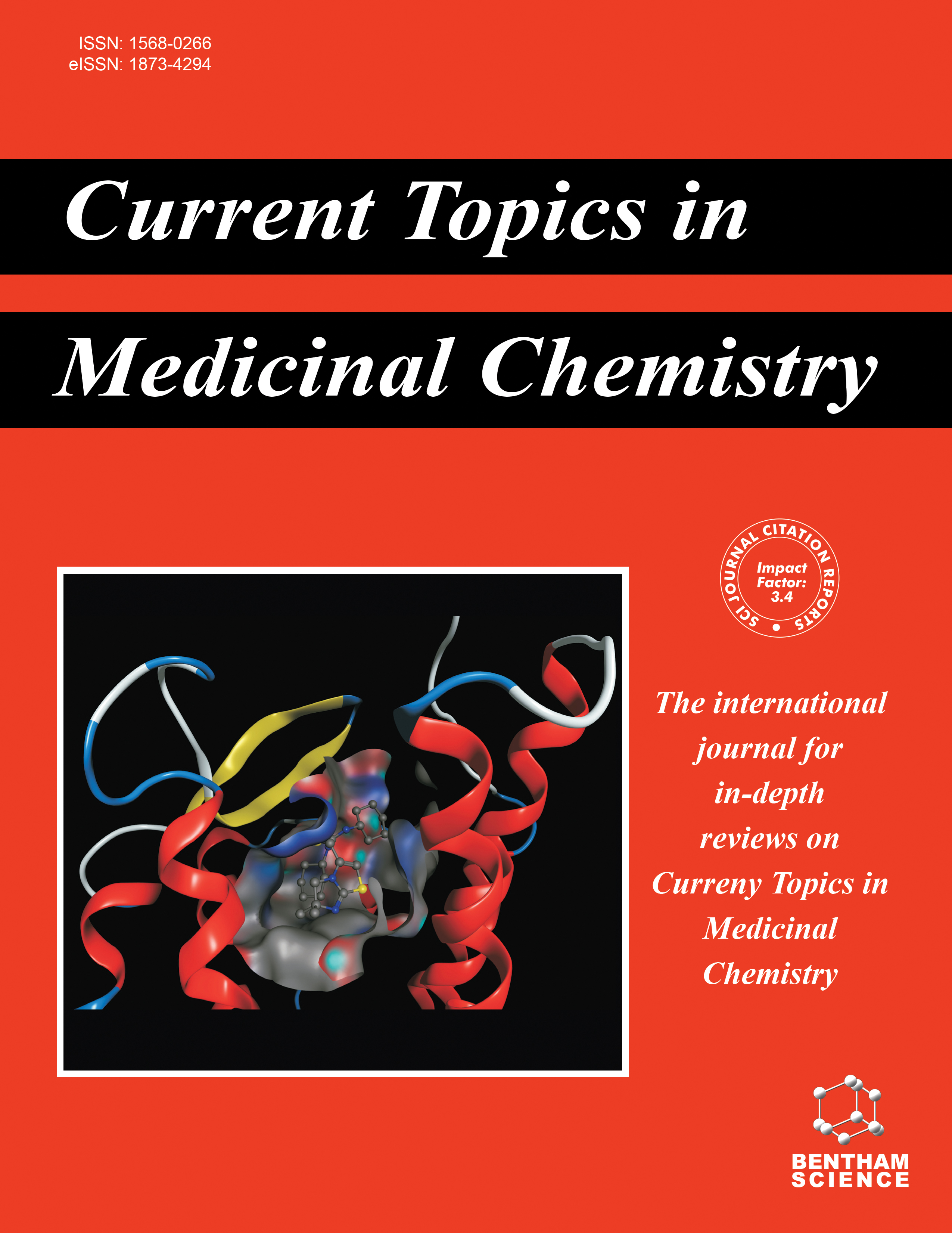- Home
- A-Z Publications
- Current Topics in Medicinal Chemistry
- Previous Issues
- Volume 23, Issue 4, 2023
Current Topics in Medicinal Chemistry - Volume 23, Issue 4, 2023
Volume 23, Issue 4, 2023
-
-
Hydrogen-producing Photocatalyst at Sunscreen for Athletes in Preventing and Healing Muscle-nerve-skin Injuries
More LessBy Pathik SahooPhysical injuries in sports are unavoidable, but they can be mitigated and even treated by using molecular hydrogen, which can be administered via a specially formulated sunscreen. The photocatalysts are a special class of semiconductors that can absorb a specific spectrum of light to promote its electron from the valance band (VB) to the conduction band (CB). This creates positively charged holes at VB and negatively charged Read More
-
-
-
Chloroquinolone Carboxamide Derivatives as New Anti-HSV-1 Promising Drugs
More LessAuthors: Mariana Souza, Camilly P. P. de Melo, Letícia V. Faro, Luciane Fragel-Madeira, Viveca Giongo, Paula Alvarez Abreu, Fernanda da Costa Santos Boechat, David de Oliveira Silva, Nathalia Motta de Carvalho Tolentino, Claudio Cesar Cirne-Santos, Caroline de Souza Barros, Helena Carla Castro, Marcos Costa de Souza, Maria Cecília Bastos Vieira de Souza and Izabel Christina Nunes de Palmer PaixãoBackground: Since the emergence of HSV resistant strains, new antiviral agents have emerged and still are urgently needed, especially those with alternative targets. Objective: In this work, we evaluated new quinolone derivatives as anti-HSV. Methods: For this study, cells were infected and treated with different components to evaluate the profile of HSV replication in vitro. In addition, studies were performed to determine th Read More
-
-
-
Synthesis, ADMET Prediction, and Antitumor Profile of Phenoxyhydrazine- 1,3-thiazoles Derivatives
More LessAuthors: Lucianna Rabelo Pessoa de Siqueira, Larissa Pelágia de Lima Ferreira, Gevanio B. de Oliveira Filho, Marcos Victor Gregório de Oliveira, Aline Ferreira Pinto, Vanessa Gouveia de Melo Silva, Paulo André Teixeira de Moraes Gomes, Marcos Veríssimo de Oliveira Cardoso, Maria de Nazaré Correia Soeiro, Flaviana Alves dos Santos, Maíra Galdino da Rocha Pitta, Janine Siqueira Nunes, Moacyr J. B. de Melo Rego and Ana Cristina Lima LeiteBackground: Cancer is one of the most important barriers to increasing life expectancy in all countries in the 21st century. Investigations of new anti-cancer drugs with low side effects are an urgent demand for medicinal chemists. Considering the known antitumor and immunomodulatory activity of thiazoles, this work presents the synthesis and antineoplastic activity of new thiazoles. Methods: The 22 new compounds (2a-v Read More
-
-
-
Nanostructured Transition Metal Sulfide-based Glucose and Lactic Acid Electrochemical Sensors for Clinical Applications
More LessAuthors: Mani Arivazhagan, Palanisamy Kannan and Govindhan MaduraiveeranEngineered nanostructures of mixed transition metal sulfides have emerged as promising nanomaterials (NMs) for various electrochemical sensors and biosensors applications, including glucose sensors (GS) and lactic acid sensors (LAS) in clinical aspects. Electrochemical sensors based on nanostructured materials, such as transition metal sulfides and their nanocomposites, including graphene, carbon nanotubes, molecular Read More
-
-
-
Electrochemical Nanomaterial-based Sensors/Biosensors for Drug Monitoring
More LessDetermining the amount of medication used is essential for correctly managing treatment systems. The unauthorized use of drugs and the importance of determining the absorbed and required dose of drugs in target organs are essential factors that justify the design of new drug monitoring systems. Electrochemical sensors and biosensors based on nanomaterials have been developed for drug monitoring in the p Read More
-
-
-
Electrochemical Biosensors for Monitoring of Drug-DNA Interactions
More LessThe binding of the therapeutic agents to the nucleic acids is one of the paramount issues in the drug development area that is studied by various techniques. Electrochemical studies have a big portion in this area due to the fact that they allow designing of novel monitoring systems that have superior properties such as being feasible and sustainable. These electrochemical monitoring tools analyze these interactions in in vitro Read More
-
Volumes & issues
-
Volume 25 (2025)
-
Volume 24 (2024)
-
Volume 23 (2023)
-
Volume 22 (2022)
-
Volume 21 (2021)
-
Volume 20 (2020)
-
Volume 19 (2019)
-
Volume 18 (2018)
-
Volume 17 (2017)
-
Volume 16 (2016)
-
Volume 15 (2015)
-
Volume 14 (2014)
-
Volume 13 (2013)
-
Volume 12 (2012)
-
Volume 11 (2011)
-
Volume 10 (2010)
-
Volume 9 (2009)
-
Volume 8 (2008)
-
Volume 7 (2007)
-
Volume 6 (2006)
-
Volume 5 (2005)
-
Volume 4 (2004)
-
Volume 3 (2003)
-
Volume 2 (2002)
-
Volume 1 (2001)
Most Read This Month
Article
content/journals/ctmc
Journal
10
5
false
en


